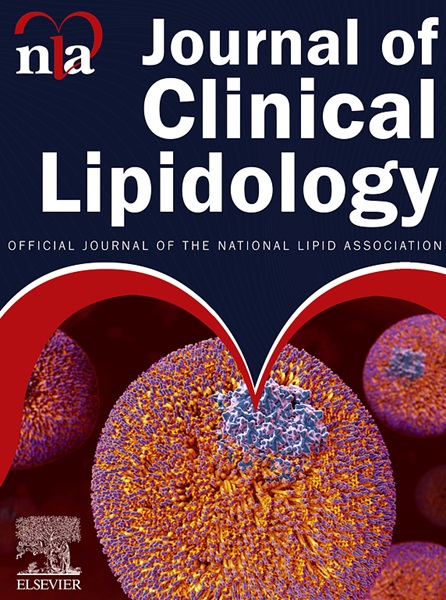原发性硬化性胆管炎患者LpX和LpZ相关高胆固醇血症1例报告
IF 4.6
3区 医学
Q2 PHARMACOLOGY & PHARMACY
引用次数: 0
摘要
本病例报告强调了胆汁淤积性肝病和脂蛋白之间复杂的相互作用,45岁男性原发性硬化性胆管炎,表现为严重的高胆固醇血症。核磁共振脂肪谱显示脂蛋白X和脂蛋白Z (LpZ)明显升高,LpZ是主要的异常脂蛋白。evolocumab是一种蛋白转化酶subtilisin/ keexin type 9 (PCSK9)单克隆抗体,可有效降低LpZ水平,从而降低低密度脂蛋白颗粒浓度。随后每日使用瑞舒伐他汀5mg进一步降低LpZ水平而不加重肝功能障碍。本病例强调了区分肝病患者继发性脂蛋白异常和原发性高胆固醇血症的重要性,以指导个性化的治疗策略。本文章由计算机程序翻译,如有差异,请以英文原文为准。
LpX and LpZ associated hypercholesterolemia in a patient with primary sclerosing cholangitis – A case report
This case report highlights the complex interplay between cholestatic liver disease and lipoproteins in a 45-year-old male with primary sclerosing cholangitis who presents with severe hyper-cholesterolemia. Nuclear magnetic resonance lipoprofile revealed marked elevations in lipoprotein X and lipoprotein Z (LpZ), with LpZ being the predominant abnormal lipoprotein. Treatment with evolocumab, a proprotein convertase subtilisin/kexin type 9 (PCSK9) monoclonal antibody, effectively reduced LpZ levels, with a consequent decrease in low-density lipoprotein particle concentration. Subsequent treatment with rosuvastatin 5 mg daily further lowered LpZ levels without exacerbating liver dysfunction. This case emphasizes the importance of distinguishing secondary lipoprotein abnormalities from primary hypercholesterolemia in patients with liver disease, in order to guide personalized therapeutic strategies.
求助全文
通过发布文献求助,成功后即可免费获取论文全文。
去求助
来源期刊
CiteScore
7.00
自引率
6.80%
发文量
209
审稿时长
49 days
期刊介绍:
Because the scope of clinical lipidology is broad, the topics addressed by the Journal are equally diverse. Typical articles explore lipidology as it is practiced in the treatment setting, recent developments in pharmacological research, reports of treatment and trials, case studies, the impact of lifestyle modification, and similar academic material of interest to the practitioner.
Sections of Journal of clinical lipidology will address pioneering studies and the clinicians who conduct them, case studies, ethical standards and conduct, professional guidance such as ATP and NCEP, editorial commentary, letters from readers, National Lipid Association (NLA) news and upcoming event information, as well as abstracts from the NLA annual scientific sessions and the scientific forums held by its chapters, when appropriate.

 求助内容:
求助内容: 应助结果提醒方式:
应助结果提醒方式:


